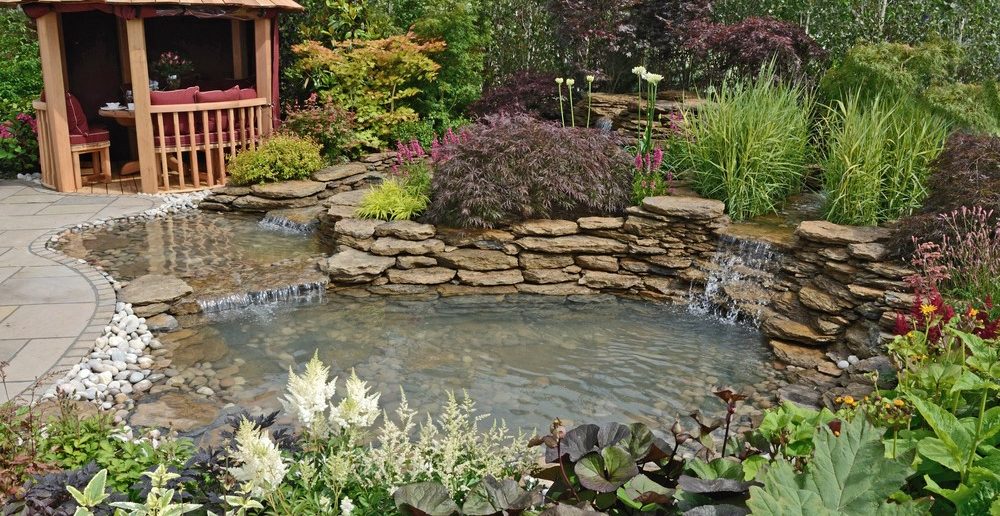The pump is to most water bodies what the heart is to the human body. It is responsible for oxygen, circulation of water and even the filter action. The pump is one of the most important features in a water garden or Koi pond, along with things like pond cover nets to protect any fish from any lurking cats and herons. Choosing a pump for your pond is a big deal; the wrong pump could ruin your pond and undermine your purpose of setting your water feature. This informative guide will provide you with the two most important factors to consider when selecting a pump for your pond.
Know Your Flow Rate
Before you consider buying any pond pump, you should first know your desired flow rate for your pond. The following factors will help you determine your pond flow rate.
Pond Size
The size of your pond is the first step to determining the flow rate of the pond. If you have a water garden with plants and maybe goldfish, you need to get a pump that can circulate at least half of the pond’s entire volume.
So if you are having a total volume of 3000 gallons, your pond should be pumping at least 1500 Gallons Per Hour (GPH). This ratio also applies for bigger ponds, although they might get away with lesser pump rate because of extra aeration from air pumps.
Effects
For visual effects like the trickle effect, you need to get a pump that has about 50 GHP per inch for the small size and about 200 GPH per inch for ponds with heavy flow.
If you have the fountain or waterfall effect, you need a pump of about 120-150 GPH per inch fall close to the waterfall width. For visual effects like waterfalls or fountains, the flow rate requirements increase:
- Trickle Effect: For a small trickle effect, you’ll need around 50 GPH per inch of width. For a heavier trickle, plan for 200 GPH per inch.
- Waterfalls: For a waterfall effect, aim for 120-150 GPH per inch of the waterfall’s width near the fall itself.
- Fountains: Fountain effects require even higher flow, often 200-300 GPH per inch of tube diameter for the fountain head.
In addition to the width or diameter, the height of a water feature also affects the flow requirements. Taller waterfalls or higher fountains need more power from the pump. When you’re working with a landscaping company in O’Fallon MO, or anywhere else, you may need to provide them with the specifications for each element. This helps determine the total flow rate needed to properly size your pump. Your landscaping team will also need to consider the head pressure of the feature. This factor determines the flow rate and the volume of water the pump must move. At last, they’ll calculate the total resistance of the entire system to ensure the pump has enough power to move the water effectively.
Other Equipment
As you already know, the pump works together with other pond equipment like the filter, theUV clarifier, Pond Liners and even the skimmer. So when buying a pump, cross-check all other equipment to make their maximum or minimum rating from the manufacturer matches with that of your pump.
The Type of Pump
There are different types of pump designed for various water features. These pumps come with their own unique features, advantages and disadvantages. So, your choice should align with your specific needs and requirements. For instance, if energy efficiency is a priority, exploring eco-friendly and energy efficient pump options would be a wise decision. Selecting an energy efficient pump can contribute to sustainable pond management by reducing energy consumption and operating costs. Additionally, there may be pond management programs that offer guidance on choosing pumps with low energy requirements and durable construction to maximize efficiency and minimize environmental impact. So, with the appropriate pond management strategies in place, the pump you choose can operate efficiently, meeting your needs while promoting sustainability.
To better understand the available options and make an informed decision on the pump that aligns with your criteria, let’s explore the four basic types of pumps:
The Direct Drive Pump
This type of pump has the impeller joined directly to the shaft of the motor. The primary advantage of the direct drive pump is its high power. The pump provides high flow rate and requires little or no maintenance. It’s only con is the high cost of purchase.
Magnetic Drive Pump
The Magnetic drive pump has its impeller connected to a magnet. This magnet rotates when the pump is in operation and allows the impeller to spin too. Magnetic drive pumps are excellent as the pump have low energy consumption because they are used for low-head situations. The pump lasts long too, and can be easily serviced.
Asynchronous Pump
This type of pump also has the same mode of operation like the magnetic drive pump. The only difference is that the impeller is not directly linked to a magnet. The formation Is more complicated and more effective than the magnetic pumps. The only major con to this pump is that it requires more maintenance time to ensure it is always in good shape.
External Centrifugal Pumps
The external centrifugal pumps comes in different types, shapes and flow rates. The external pump requires extra piping and plumping. They are expensive but provide much more power and energy efficiency than the three above.
Hope this was helpful?





